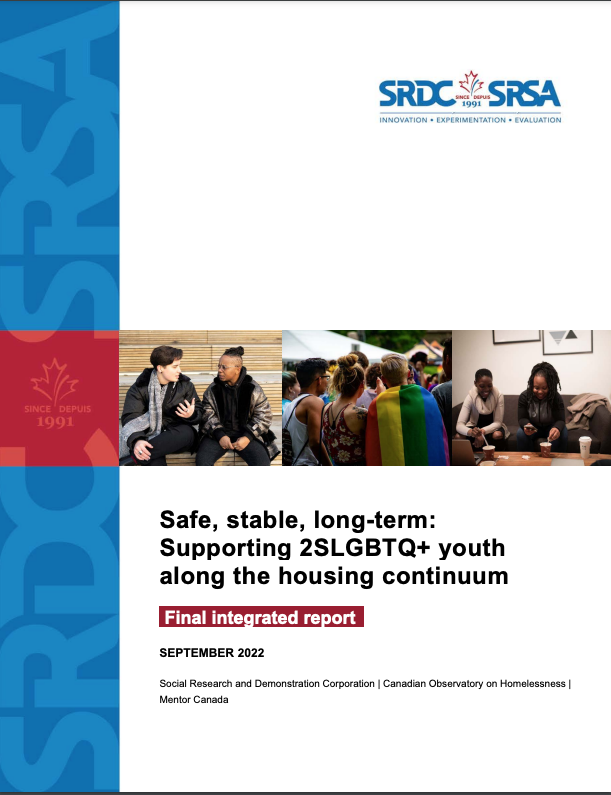In this training, participants will explore the challenges faced by 2SLGBTQ+ youth navigating homelessness and housing insecurity. These young people encounter unique obstacles throughout their housing journeys, significantly influenced by their identities and circumstances. Discrimination within the housing system, coupled with a lack of tailored services creates significant barriers to safe and affirming housing and services.
The training incorporates active learning to help reinforce key concepts and encourage knowledge retention. Through videos, scenarios, practice exercises and quizzes, participants will learn about the specific realities and experiences of 2SLGBTQ+ youth seeking stable housing.
By the end of this training, participants will be able to:
- Identify specific barriers 2SLGBTQ+ youth face in accessing housing
- Understand the role of supportive relationships in enhancing housing stability
- Develop strategies for creating inclusive housing solutions.
Drawing on research findings and practice examples, participants will explore innovative approaches to promote housing stability. Designed for housing service providers, healthcare professionals working with homeless youth, and community service workers, this course aims to deepen understanding and improve practices.
Enrol in this on-demand training today to become a stronger advocate for 2SLGBTQ+ youth and learn how to promote safe, stable and long-term housing and services.
TRAINING content

Acknowledgments
This training module is the culmination of extensive collaboration and draws upon the significant contributions of numerous researchers, advocates, and individuals who have dedicated their work to addressing 2SLGBTQ+ youth homelessness. Our profound gratitude goes to Christina Hackett, Chloe Halpenny, Basia Pakula and Tiffany Scurr of Social Research and Development Canada. Their report, Safe, Stable and Long-Term: Supporting 2SLGBTQ+ Youth Along the Housing Continuum, has been instrumental in shaping the content of this training.
We especially want to thank the young people involved in co-creating the SSLT study who shared their experiences of housing precarity and homelessness.
Special recognition is given to Dr. Alex Abramovich, an internationally recognized leader in the area of 2SLGBTQ+ health and homelessness. Dr. Abramovich’s pioneering research resulted in the development of Canada’s first dedicated housing programs for 2SLGBTQ+ youth.
We are also indebted to John Ecker (COH) for his foundational guidance and C.L. Michel for her meticulous review and insightful feedback through numerous drafts.
Instructional Design by Karen Bosworth (COH) with assistance from Pravina Palanisamy (Making the Shift, Inc.). Technical production by Chris Durand (COH).
About the Safe, Stable and Long-Term Research Project
This project involved two phases of research to explore the housing journeys and experiences of 2SLGBTQ+ youth and the barriers and facilitators they face to access stable, safe, and long-term housing in Canada. The final report, which includes an executive summary of Phase 1 and Phase 2, infographics highlighting key findings from Phase 2, and co-designed solutions and recommendations from service providers and youth.
A Note about Language
In this training, we use the acronym “2SLGBTQ+” to mean Two-Spirit, lesbian, gay, bisexual, transgender, queer and questioning plus additional sexual orientations and gender identities.
We also use the term queer in reference to youth who identify as 2SLGBTQ+. Queer is a broad term that includes all sexual orientations and gender identities within the 2SLGBTQ+ community, including those who don’t identify with any other identity in the 2SLGBTQ+ acronym. Although queer has been used negatively in the past, it is being reclaimed by some in the 2SLGBTQ+ community as a way to self-identify that is positive and empowering.
We recognize that people have the right to choose how they want to be identified.
“Youth” is used broadly here to refer to young people from under 18 years old to under 30 years old. Sources cited in this training may use different age ranges when referring to youth.

